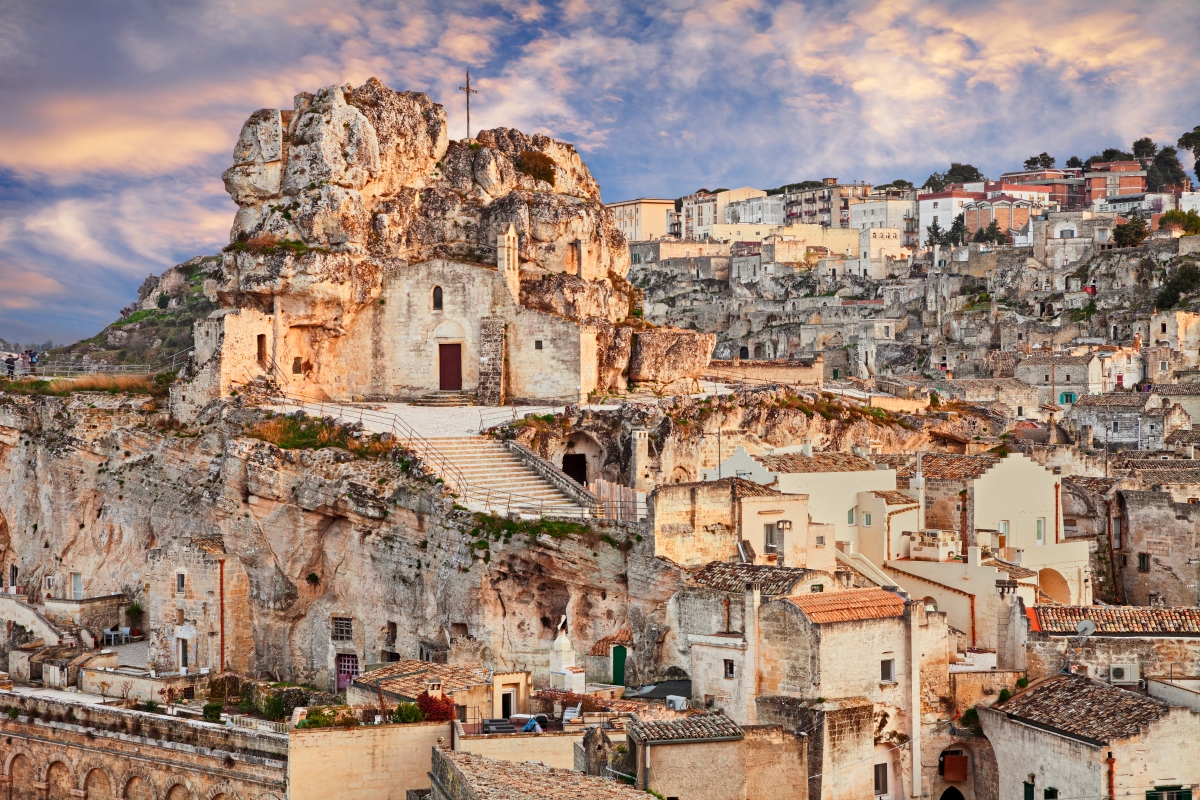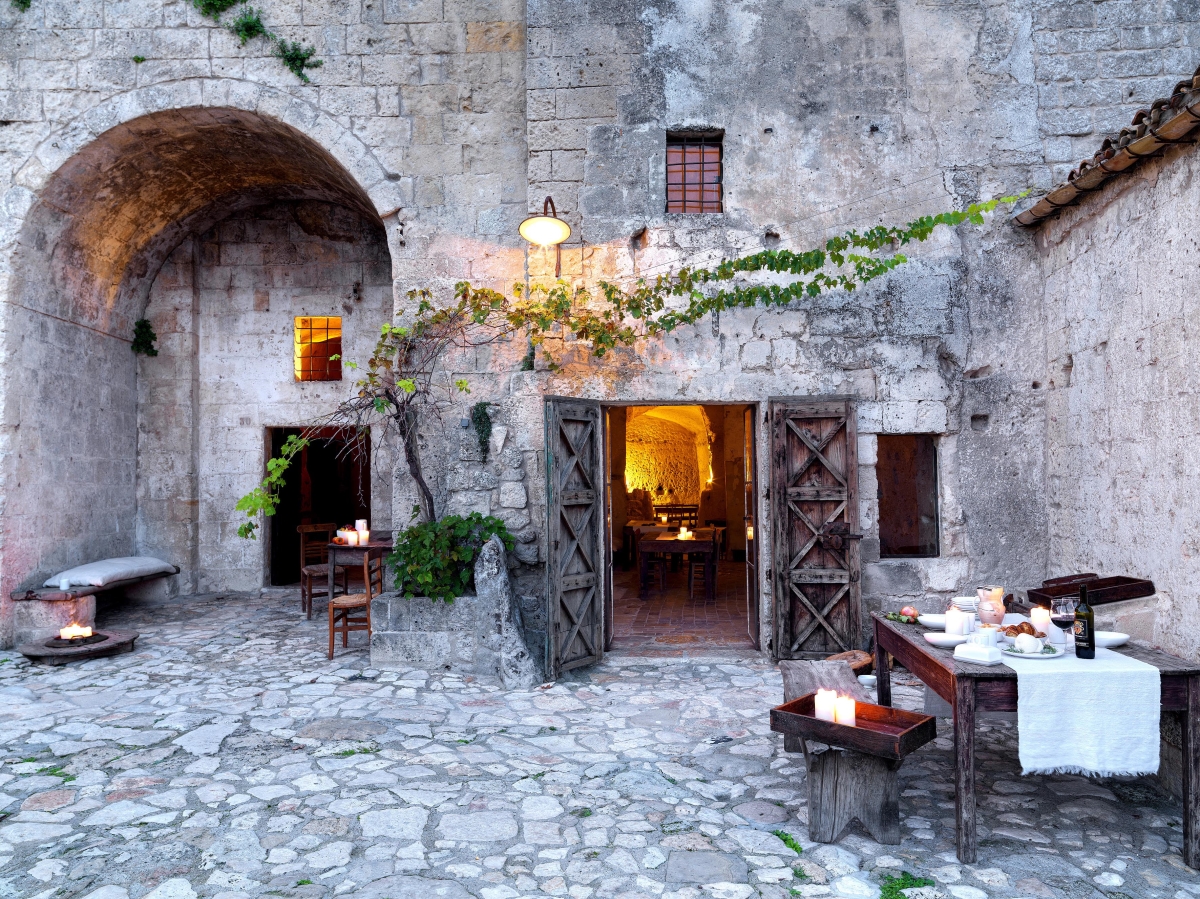
It’s all about la dolce vita in Italy’s deep south. Belinda Luksic unravels the region’s history, culture and food on a heart-stopping tour aroundPuglia.
The bells of Lecce Cathedral are ringing; a jubilant clanging that resounds throughout the historic UNESCO town that the cathedral takes its name from. It’s 1pm and in Italy’s southern region of Puglia, where siesta is a deeply held tradition, the streets are soon empty and the shops shut for the long afternoon riposo (rest).
We’ve spent the better part of the morning kneading focaccia dough and twirling pasta into orecchiette cups (“better to hold the sauce”), peeling fat fava beans and artichokes for zuppa (soup), and rolling thin blankets of pork around prosciutto and local cheese.
It’s the humble makings of a traditional Salento lunch – the local cucina povera (peasant fare) found in various forms around Italy, and taught in a 17th century former monastery in town by Gianna Greco. A chef, sommelier and olive oil taster, Greco is also the owner of the wonderful Cooking Experience Lecce.
Afterwards, our stomachs full, it’s a quick walk with our guide down Lecce’s main street, at night the place of la grande passeggiata, the evening promenade that is one of Italy’s more enduring traditions. Around the corner we discover the dazzling Baroque architecture of Piazza del Duomo.
Hewn from the stone of Lecce, a soft and workable limestone that glows honey over time, the florid artistry of the cathedral, bishop’s seminary and five-storey campanile that bound the vast piazza is striking. Cherubs dance above mounds of fruit, blossoms and shells. Grotesque gargoyles leer from ledges, and serpentine ropes bedeck the saint-filled façade. There are curlicue flourishes, pyramids and decorative pediments.
This Barocco Leccese we see everywhere in Lecce – from the sinuous concertina frill of an upstairs balcony to the elegant moulding above a door and ornate exterior of a grand palazzo.
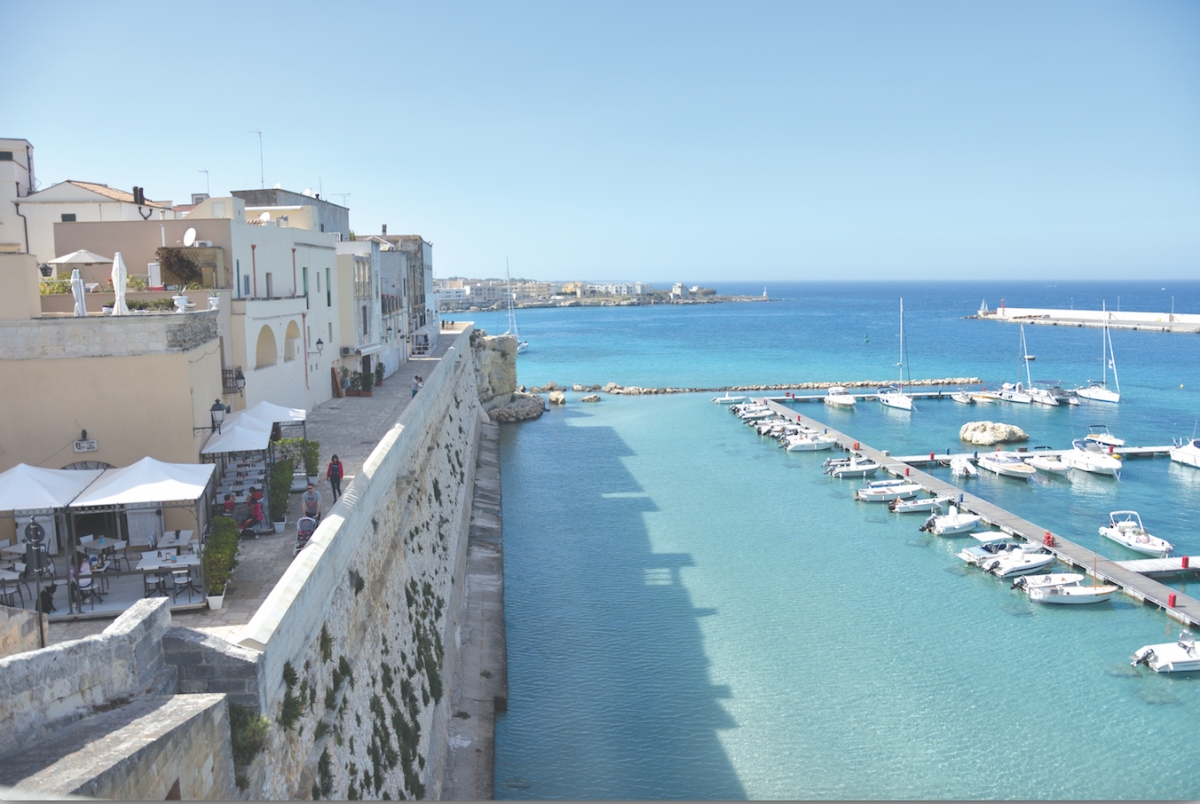
First settled by the Greeks and conquered by the Romans before falling to the Normans, Lecce has a rich heritage. But it was the Spanish, and the sculptors of the 16th and 17th centuries, notably Giuseppe Zimbalo, who restored the cathedral and bell tower, helping the city earn its nickname as the ‘Florence of the South’.
It’s just one stop on a luxury five-day tour of Puglia and Basilicata (the stiletto and arch of Italy’s boot) curated by Southern Visions Travel, a bespoke experiential travel company based in southern Italy with a fleet of sleek BMWs to transport guests between destinations.
Otranto, Italy’s easternmost town, is our first stop. On the Adriatic Coast in Puglia, the historic port has a violent past – a brutal invasion by the Turks in 1480 left its 813 inhabitants martyred. It’s a history that’s difficult to reconcile as we wander the ancient walled city, quiet and uncrowded, in May. We pass small designer shops, restaurants and bars, and catch glimpses of the brilliant blue sea.
Lunch is at eminently likeable L’altro Baffo – a seafood tasting plate served raw (standard in Puglia) and handmade pasta plump with fish. And the martyrs? Their skulls and bones can be found in the Norman cathedral within the walled city, along with an incredible mosaic of the Tree of Life on the floor.
En route to the white city of Ostuni, sprawled on a hillside like a wedding cake topped with a Gothic cathedral, we pass rugged and wind- swept landscapes dominated by gnarled olive trees that are thousands of years old. It’s these very trees, UNESCO protected and numbering in the millions, that account for almost half of Italy’s fine olive oil output.
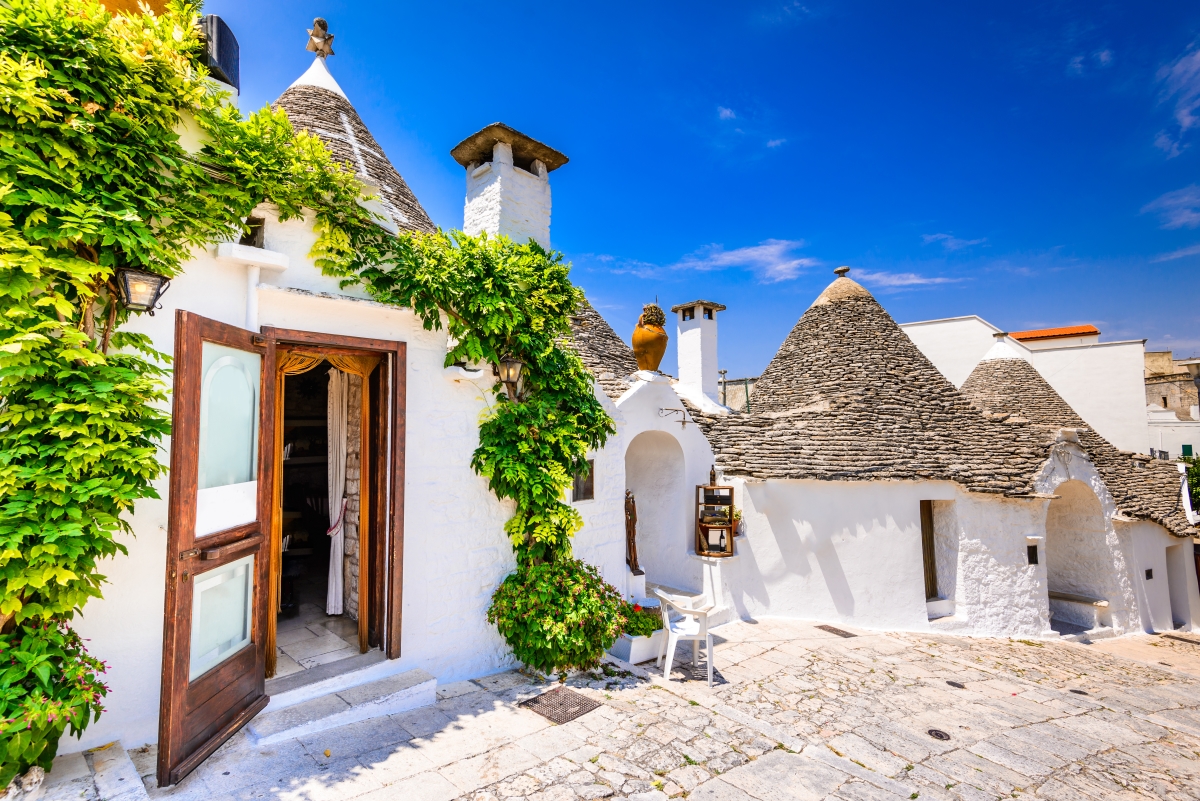
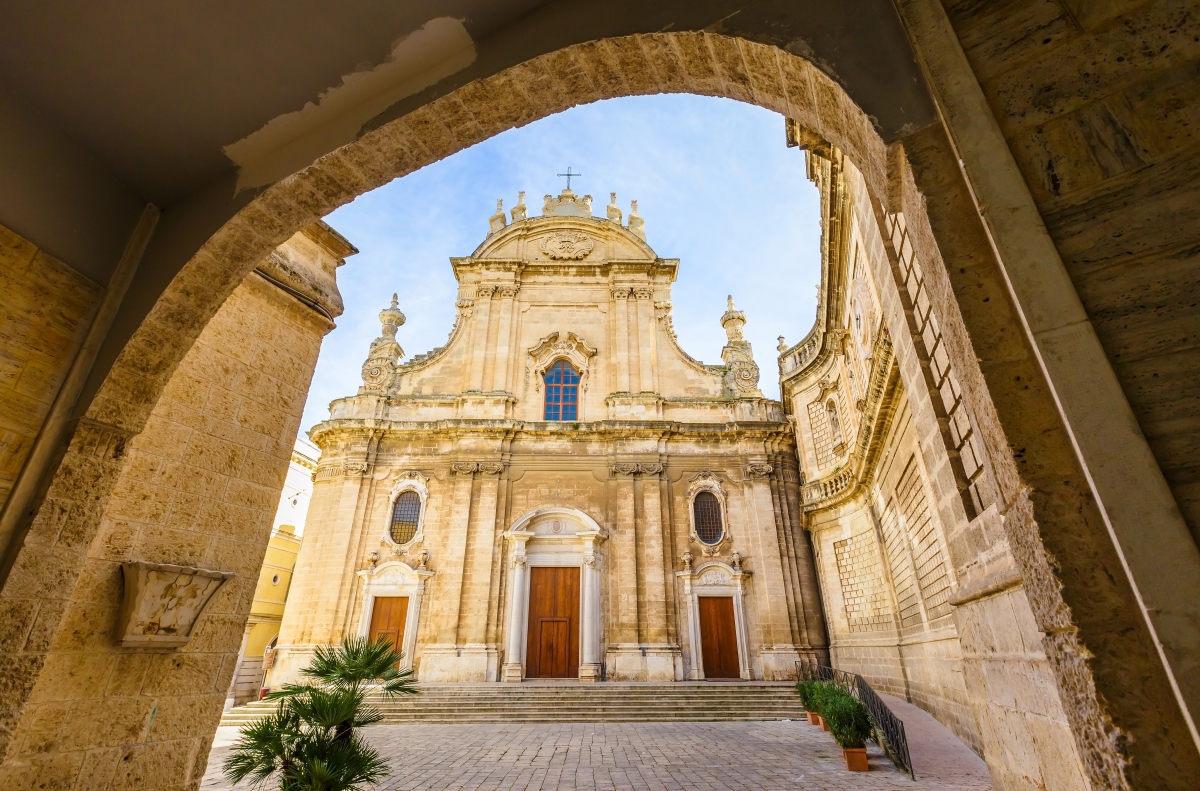
We sample this liquid gold at Masseria Brancati. The small olive farm and hotel near Ostuni has been in the same family for 200 years, with its silvery olive grove dating back more than 3,000 years to the Romans. Afterwards, we descend a set of steep stone steps worn smooth by time to a subterranean cave where an old olive oil press and extraction mill is carved into the rock.
It’s in these charming masserie that we see Puglia’s deep roots to the past. These medieval fortified farmhouses were self-sustaining and a defence against invasion from the marauding armies that ranged the countryside. Today, many have been transformed into luxe stays.
Masseria Trapanà on the outskirts of Lecce is one of the newest. The spartan 16th century former olive mill elegantly restored by Australian Rob Potter-Sanders is divine. Within its six gardens are citrus trees dripping with fruit, ripe mulberries we pluck and eat, cacti and sweet-smelling jasmine. We lounge by the pool, eat meals alfresco beneath orange trees, read books in various hammocks strung about the place and take long, luxurious baths in our outdoor tub for two.
We end our adventures in Matera, the ancient UNESCO town in Basilicata and the designated European Capital of Culture in 2019. Claimed as the third-oldest continually inhabited settlement in the world (after Aleppo and Jericho), its ancient civilisation dates back more than 9,000 years. It’s a place that feels lost in time.
Stone houses and caves piled higgledy-piggledy on top of one another perforate the cliffs and deep ravine that runs through the city. The land beyond is scrubby and desolate, and zigzagged with trails that lead to hidden chapels and more remote caves.
It’s Matera’s story of rebirth that is most remarkable. The impoverished city was declared Italy’s great shame in the 1950s and the entire population of around 15,000 cave dwellers were relocated to a new government housing project. But the ancient city has undergone a renaissance.
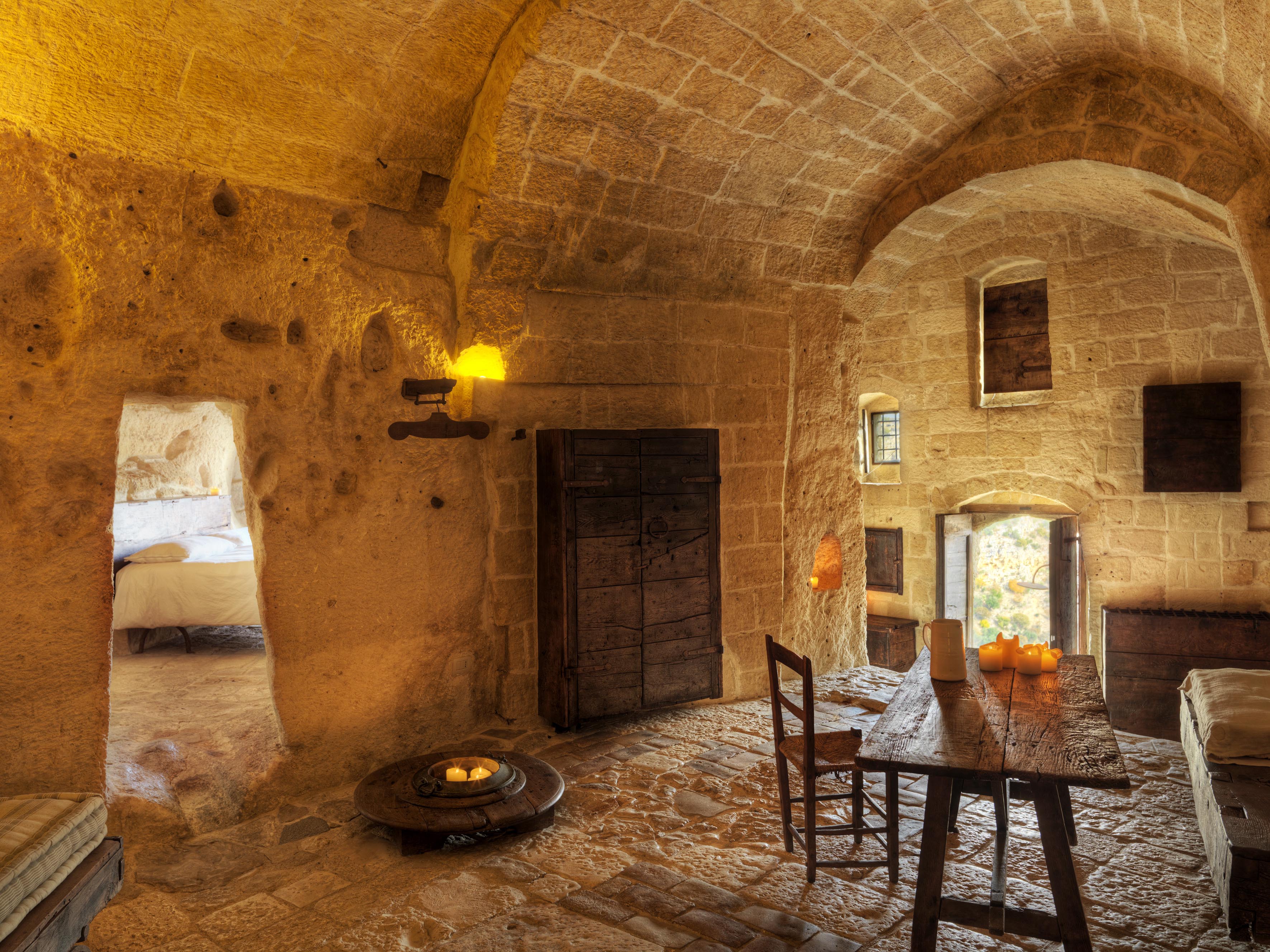
We lounge by the pool, eat meals alfresco beneath orange trees, read books in various hammocks strung about the place and take long, luxurious baths in our outdoor tub for two.
In Sasso Barisano, the section of the city that has been restored, the caves are filled with hotels, restaurants, cafes and bars. Its resemblance to biblical Jerusalem has made it popular with Hollywood. Mel Gibson’s e Passion of Christ was filmed here, as well as scenes from the latest instalment of Wonder Woman. More than 2,000 people have returned, renting caves from the government.
Our room in the prehistoric Sextantio le Grotte della Civita is a looking glass into a world that once was. It’s simply furnished and lit by candles, and we spot grooves beside our bed, where the donkeys were kept. The drawers of the dark wood bureau were once used as a bed for babies and small children. There is luxury and romance, too. Deep in the dimly lit recesses of our cave, a sunken bathroom with a freestanding elliptical tub beckons the weary traveller.
